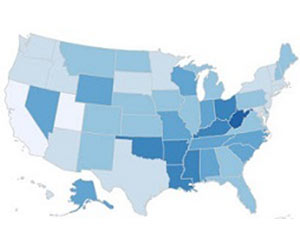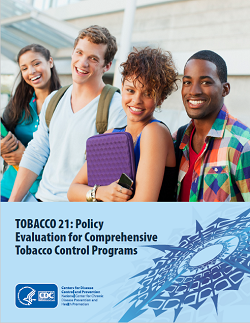Tobacco Control Programs

Smoking harms nearly every organ of the body, causing many diseases and affecting the health of smokers in general. The Office on Smoking and Health (OSH) helps states and communities implement tobacco control programs by featuring national and local campaigns and events, linking to state and community resources, producing guidelines, and compiling data.
CDC’s Office on Smoking and Health (OSH) created the National Tobacco Control Program (NTCP) in 1999 to encourage coordinated, national efforts to reduce tobacco-related diseases and deaths. The program provides funding and technical support to state and territorial health departments. NTCP funds.
- All 50 states
- The District of Columbia
- Eight U.S. territories/jurisdictions
- Eight national networks
- Twelve tribal support organizations
NTCP-funded programs are working to achieve the objectives outlined in OSH’s Best Practices for Comprehensive Tobacco Control Programs.
- Eliminate exposure to secondhand smoke
- Promote quitting among adults and youth
- Prevent initiation among youth and young adults
- Identify and eliminate tobacco-related disparities
- Best Practices for Comprehensive Tobacco Control Programs, 2014: Updated edition of an evidence-based guide to help states plan and establish effective tobacco control programs.
- Sustaining State Funding for Tobacco Control: A resource for states to preserve tobacco control funding.
- State Legislature Links: Links to state-specific legislative information.
- CDC Guidance for Collaboration with the Private Sector: Guidance on accepting funds from private industry.
- Conducting Quitline Evaluations: A Workbook for Tobacco Control Professionals: This workbook is designed to help facilitate the development of a quitline evaluation plan.
- Developing an Effective Evaluation Plan: This workbook is designed to help public health program managers, administrators, and evaluators develop an effective evaluation plan.
- Developing an Effective Evaluation Report: This workbook is designed to help public health program managers, administrators, and evaluators develop an effective evaluation report.
- Evaluation Toolkit for Smoke-Free Policies: This toolkit provides approaches to evaluating the effects of state policies and laws that restrict smoking in workplaces and public places.
- Introduction to Process Evaluation in Tobacco Use Prevention and Control: A guide that defines process evaluation and describes the rationale, benefits, key data collection components, and program evaluation management procedures.
- Preventing Initiation of Tobacco Use: Outcome Indicators for Comprehensive Tobacco Control Programs-2014: An updated guide that provides information on 62 preventing initiation outcome indicators to assist with program planning and evaluation.
- Promoting Quitting Among Adults and Young People: Outcome Indicators for Comprehensive Tobacco Control Programs-2015: An updated guide that provides information on 46 promoting quitting outcome indicators to assist with program planning and evaluation.
- Eliminating Exposure to Secondhand Smoke: Outcome Indicators for Comprehensive Tobacco Control Programs: An updated guide that provides information on 38 secondhand smoke outcome indicators to assist with program planning and evaluation.
- Key Outcome Indicators for Evaluating Comprehensive Tobacco Control Programs: A guide that provides information on 120 key outcome indicators.
- Surveillance and Evaluation Data Resources for Comprehensive Tobacco Control Programs: This booklet is an at-a-glance compilation of surveillance and evaluation resources for comprehensive tobacco control programs. It is meant to be used by program managers and evaluators in planning and evaluating tobacco control programs.
- Tobacco 21: Policy Evaluation For Comprehensive Tobacco Control Programs: A guide to help state, local, territorial, and tribal health departments plan and implement evaluation of the federal law to raise the minimum legal sales age (MLSA) for tobacco products to 21 years.
- Question Inventory on Tobacco: A tool that categorizes more than 1,000 tobacco-related questions.
- Cancer Prevention & Early Detection Facts & Figures [External Link]external icon: Facts and figures on tobacco use and tobacco control programs are included in this resource from the American Cancer Society.
Collected feature articles on Smoking and Tobacco Use on Smoking and Tobacco Use topics. Features each year coincide with CDC initiatives, annual events like Back-to-School and New Year’s, and observances like World No Tobacco Day. Articles include stories from the award-winning Tips From Former Smokers® campaign as well as resources to help readers successfully quit smoking.




